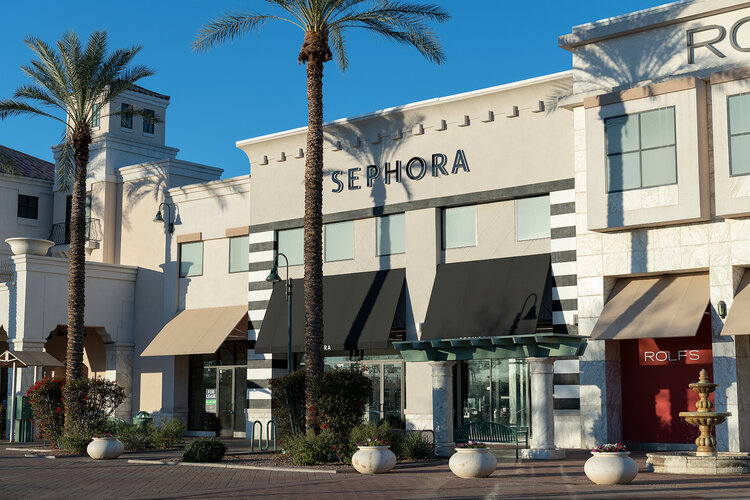
Sephora Is Being Compared To Claire’s. Should It Do Anything About It?
Sephora is being compared to Claire’s on TikTok due to tweens and teens, whose behavior is being slammed on the platform, flocking to it for brands like Drunk Elephant, Glow Recipe, Sol de Janeiro and Rare Beauty. Intrigued by the comparison and its implications, for the latest edition of our ongoing series posing questions relevant to indie beauty, we ask 15 retail and beauty entrepreneurs and experts, including a 12-year-old beauty enthusiast and her mother, the following questions: What do you think the impact of this phenomenon will be on Sephora? If you were advising the retailer, is there something would instruct it to do about it?
- NEIL SAUNDERS Managing Director for Retail, GlobalData
Younger kids and tweens today are more interested in beauty than previous generations, and Sephora has become something of a magnet to them because of its expertise and strong range. While tweens have a right to shop and buy things like anyone else, if they start negatively impacting the shopping experience such as by trashing testers or displays, then Sephora might need to do something about it.
However, quite what they do is open to debate. Putting in place a minimum age for shopping unaccompanied, as some malls have done, would be controversial and difficult to enforce. Some of the complaints are also frivolous: A tween getting the last remaining product first isn’t exactly a reason for banning younger shoppers from stores.
- WIZZ SELVEY Retail Strategy Advisor, WIZZ&CO
This provides a unique opportunity and challenge for retailers like Sephora. Many businesses strive to attract younger customers as they are the future consumers. We are seeing younger than ever people buying into makeup and skincare due to the rise of social media hype compared to five years ago.
The challenge is balancing the customer experience with their established customers who likely have more spending power as a shop full of tweens and teens could alienate adult shoppers. Sephora had huge queues to get in the store in the U.K. over the school holidays, which again can put adult shoppers off entering.
I would advise Sephora to focus on segmenting its customers and creating events in stores at key times that serve different demographics. The added challenge may be that teens are likely using their parent's credit cards and loyalty cards when purchasing, so CRM teams need to be mindful of this when analyzing data and targeting customers. Personalization is a big focus for retailers, particularly when they stock a wide range of brands, but personalization looks very different online from what it does in-store.
With this particular example of a highly sought-after product being snatched by a tween, there is an opportunity for Sephora to create waiting lists that prioritize different tiers of customers. Creating more loyalty tiers and levels for retailers is a big opportunity to ensure the customers who spend the most are rewarded.
- Julie Thibault Co-Founder and Founder, LookLook LuxuryVerse and Martingale Advisors
This is definitely a double-edged sword for Sephora. On one hand, it is great. The type of tweens who are into prestige skincare (and makeup) are sophisticated for their age and likely dragging parents into the store as well.
Sephora's brand assortment is broad enough that, as they age out of some of the younger brands, there will be something for them to move onto (like Dior) and they will already be in the sticky loyalty program. Think of the data gathered over those years! However, older millennials and gen Xers have already felt like Sephora skews young, and when you add on groups of tweens in-store, they start avoiding the stores, pushing your high-basket purchasers elsewhere.
That said, the luxury beauty buyers don't have great alternatives. Department stores feel dated, online multi-category players like Shopbop don't have a great beauty experience and specialty players like Credo don't have the full assortment. If I were Sephora, I'd consider testing a new brick-and-mortar concept for this customer. They already have them online, where they are likely to stay, but a VIB exclusive store concept in the right neighborhood might be a great draw.
- Olivia Lukas 12-Year-Old Beauty Enthusiast
Sephora is more for 12 and older because it has a lot of brands and social media influences. Kids below 12 shouldn't be on social media, so when teens see something they think is cute and looks good on the person advertising it, they want to buy it, and it's only available at Sephora.
In adults' eyes, 12- to 18-year-olds are still considered little kids, but because of social media, we are more exposed to the world and therefore more mature.
However, kids under 12 usually aren't on social media, so they are more into Claire's and similar stores. For example, if you were to walk into a middle school with 11- to 14-year-olds, you wouldn't see anyone wearing a unicorn bow. So, basically, Claire's is for 5- to 10-year-olds.
- Elizabeth Lukas Mother To 12-Year-Old Beauty Enthusiast Olivia
For perspective, when Olivia read the questions, she didn't understand the reference of Sephora being like Claire's. She was totally befuddled.
For her and her friends, they don't see what adults see. They don't perceive Sephora as an adult brand. Product wise, they go to the influencer brands versus the prestige brands (exception being Dior Lip Oil).
As a mom, it is crazy for them (me) to be spending $$$ on makeup and skincare at that age when they are so naturally perfect and pretty. They don't even have pimples yet! But it's all they want.
In the morning before school, they do group "get ready with me" calls. When they buy something, they do "haul" videos and share with their friends. They are "trying on" being an influencer. These products carry a lot of social cred.
From my perspective, having a birthday party at Sephora would be a dream come true for this age demo. The only thing they are asking for from their friends are Sephora products. Ulta is still cool, but it's like comparing Aerie to Lululemon.
- Lauren Levy Founder, Beauty House Advisory
This generation has more access to information than any other generation, and it will only further drive demand for products tweens/teens are seeing on social media, whether it’s right for their skin or not. With that being said, I see an opportunity for Sephora to offer products that work better for teenage skin, items that mom (who is likely shopping at Sephora) can feel comfortable with her teen child using.
The retailer excels at incubating and growing brands, so assuming Sephora has data to support teens purchasing Drunk Elephant (and other prestige beauty), it would be interesting for them to partner with Drunk Elephant and create a sub-brand designed to cater to teen/tween skin.
- Jaimee Holmes Brand Founder and Former VP, Beauty and Wellness, Goop
We’re in the era of overnight virality with instant gratification as a constant expectation impacting consumer demand and shopping behaviors in unprecedented ways. In years past, a brand or product could be featured in press or on air and then later evolving to influencer partnerships, which had a demonstrable impact on sales that usually could be planned for between the brand and retailers in advance.
These days, the TikTok sensation creates overnight demand and drives consumers everywhere as a result. As a former merchant, I’ve seen this impact many brands and products, causing them to sell out and create disappointment with consumers.
In some cases, however, it can actually also be considered a viable marketing tactic because, psychologically, we all tend to want what we can’t have. Depending on the stage of the brand’s growth, it can in many cases take them six months or more to get back in stock, so there’s a real need for improved supply chains to be able to react to these trends with faster speed to market.
I think all retailers are being impacted by this phenomenon, but most are still challenged with ability to be nimbler to react to a brand or product that achieves virality. It’s easy to switch gears in online and social marketing, but the in-store experience tends to be much slower to react.
It would be great to see retailers create a section front and center of their stores dedicated to “TikTok-trending” products, that could be frequently updated in real time to capture the momentum and drive sales for both retailer and brand, and most importantly, serve consumer demand in the moment.
- Megan Merid Founder and Owner, Manifest Beaute Consultancy
I myself have witnessed these very young girls or tweens in store asking for products like Drunk elephant, CosRx, etc. My main concern is that using products that contain ingredients such as retinol may be a bit too aggressive for this age group. (I am seeing girls as young as 8-years-old.)
I think Sephora and other retailers have an opportunity here to open up their assortment to include both gen Z and gen alpha. Recently, I purchased Bubble for my young daughter so she can start participating in good skin habits. I love the gentle ingredient deck combined with the simple yet appealing packaging.
I would love to see more of these brands available to shop now that this next generation is so savvy on all social media platforms. Beauty innovation is not going away, and neither is TikTok. so it's time to get on board!
- Jean Baik Founder, Miss A
I personally think it’s great for Sephora that a younger audience has interest in their products. As a brand owner that has a lot of tween and teen customers, it’s great to have this demographic start shopping at an early age and then continue to provide products for them as they get older.
If I was advising Sephora, I would have them embrace this younger audience and continue to be a “cool” store where they want to shop. I can see the frustration of the OG Sephora shoppers having to fight for products with teens, but that means that it’s hot.
- Heather Ibberson Retail Analyst, Edited
Gen alpha, the oldest of which will be turning 14 this year, is the next generation of consumers who are poised to hold the greatest amount of spending power in history. In light of this, Sephora has an opportunity here to start more closely engaging with this younger demographic, who show a keen interest in creating good skincare habits both in stores and online.
Both employees and customers have taken to TikTok to share experiences they’ve had with pre-teens in-store, in particular regarding damaged samples on display shelves where customers have created “skincare smoothies,” a viral TikTok trend that involves mixing several skincare products together promoted by mega influences like Meredith Duxbury. This could potentially cause problems for both retailers and brands and their IRL image, particularly regarding prestige brands like Drunk Elephant.
Removing samples from the shelves of cult brands or providing empty testers where customers have to ask employees for samples to test could be a temporary measure for stores as a last resort. Educating both parents and gen alpha on products that are suitable for pre-teen skin is the more effective long-term solution to both help and engage with this new generation of beauty enthusiasts.
While many tweens are getting their skincare tips from beauty influencers on TikTok, Sephora can create their own educational content on the best skincare products for teen skin through videos and live streams, educating their audience on a simple three-step skincare routine (cleanser, moisturizer, SPF) and the potential dangers of mixing and using high-performance ingredients like acids and retinol on the skin.
Partnering with influencers and dermatologists on video content helps build credibility and also makes the content more engaging for a younger audience, who can engage in a conversation with the retailer and ask questions in the comment section.
- Suzanne Kopulos Founder, SLK Brands
I see two critical paths for Sephora. First, reclaim its reputation as the premier education-driven beauty retail destination. Second, carve out an entirely new space for “Sephora Kids” to shop, just as has been done for wellness, clean beauty and The Next Big Thing categories.
Empowering beauty enthusiasts goes beyond selling products, it's about elevating the customer experience through education. Historically, Sephora set the standard, and now we see an incredible opportunity to not just be a retailer, but a trusted guide in the world of skincare, imparting knowledge that transforms routines hand-picked for a younger generation that encourages self-care that is both safe and fun.
In doing so, we not only enhance beauty, but we cultivate confidence and self-expression in every individual they touch.
- Christina Okubo Founder and Managing Director, Odepartment
Honestly, I think this is great opportunity for Sephora to think about their stance on “beauty positivity.” As a retailer that supports inclusivity and self-expression, it’s key that Sephora consider the role it plays in their customers’ (young or old) sense of self. Beauty is inherently an aesthetic space, which is notorious for toxic and unrealistic expectations.
Instead of standing on the sidelines, this is a chance for the retailer to shape the conversation and customer thinking around these concepts which in turn will only strengthen Sephora’s positioning moving forward.
- Manola Soler Senior Director, Consumer and Retail Group, Alvarez & Marsal
From a retailer’s perspective, acquiring a new crop of consumers is always good news, even better if they are young consumers at the beginning of their beauty journey. For retailers like Sephora, it is a great opportunity to educate young consumers (and their parents) and start them on a life-long journey as beauty consumers. If they are able to guide these young shoppers into age-appropriate skincare that addresses their needs and concerns, there is an opportunity to create great brand loyalty with a new generation of beauty shoppers.
Young girls buying beauty and skincare is by no means a new phenomenon. Decades ago, I remember pestering my grandmother to take me to shop for my first beauty regimen when I was in the 6th grade. We bought a famous three-step cleanser, toner, moisturizer combo at the branded beauty counter in our local department store.
The challenge is how to cater to these new, younger consumers without alienating the more established shoppers, while also educating these new beauty shoppers in a responsible way that builds trust and hopefully a lasting relationship with the retailers they shop.
A lot of this can be addressed through in-store merchandising, creating zones for different sets of consumers to shop with less overlap under one roof. The zones needn’t be explicit (nobody wants to shop the “kids’ zone” at a beauty store), but even a basic re-flowing of brands based on the demographics shopping them or a clustering by skin concerns could create self-selecting consumer journeys in store.
That said, I suspect this generational friction is a bit unavoidable and likely to move to another arena soon enough—skinny jeans versus baggy jeans, middle part versus side part, millennials’ love of avocado toast, the list goes on. There is always that friction as new generations come of age and start doing things slightly differently than their predecessors. Gen alpha is growing up, and it seems their priorities as a consumer skew towards beauty and self-care.
- Donna Lopez Founder and CEO, Making Lemonade and Zest Brands
As a brand developer and trend forecaster, I view this shift as a significant opportunity for Sephora to embrace the changing consumer landscape. This change reflects the impact of influencer culture, demographic cycles and generational shifts in consumerism and marketing. It's not just about the emerging gen alpha, it also encompasses the socially vocal nature of gen Z.
Gen Z's dominance in the buyer landscape and their vocal expression on platforms like TikTok marks a distinct departure from previous generations. Millennials and gen X shared similar sentiments, but lacked the same social media fervor.
Each generation narrows the gap with technological advancements and increased exposure to information and influence as seen with gen alpha, the “iPad generation,” active on platforms like YouTube and TikTok from a younger age. This early engagement fosters heightened awareness of beauty products, brands, and ingredients.
Advising Sephora, I propose three core strategies:
- Education: Implement a multifaceted educational approach spanning online, brand and consumer realms. Online, create an interactive, dedicated space and store offerings with age-appropriate skin education and tutorials. Brands included should meet safety testing criteria. Brand education could also clearly denote products safe for tweens and kids, similar to other Sephora initiatives, backed by accountability through indicators like “tested skin safe for ages 10+.”
- Empowerment: Embrace the influx of younger consumers as a chance to cultivate lifelong brand loyalty. Continuously adapt brand partnerships to align with evolving youth preferences. Collaborate with trendy brands, launch exclusive products and run campaigns promoting empowerment and confidence rather than exploiting insecurities. Ensuring that the marketing is on the platforms they are on is equally important to ensuring the right message is reaching the right consumer.
- Experience: Craft a tailored customer experience targeting both younger and existing demographics. Offer events that include all generations in the conversation such as building skincare routines together with your mother or daughter. Design dedicated sections, events or online content specifically catering to younger audiences. I’ve noticed a shift in removing testers entirely, which protects costs for brands and Sephora alike, but also leads to a loss in the in-store experience and conversion rates. To address this, consider incorporating virtual try-on experiences or gamified elements in dedicated sections to entice younger consumers, alleviate tester issues and spark interest in products.
- Mike Modula Co-Founder, Sepia
The surge of interest among teens and tweens in Sephora's beauty selection offers both a promising opportunity and a challenging task for the retailer. It's a chance for Sephora to engage with an emerging customer segment and foster early brand loyalty.
However, the challenge lies in guiding these young shoppers (and their parents) through Sephora's product range to ensure they choose appropriate products. Skincare is a particular concern. While emphasizing basics like cleansing, moisturizing and SPF application is ideal for a healthy routine at any age, using potent active ingredients at a young age could be risky for their skin health.
Education becomes key here, possibly through in-store workshops, online tutorials and tailored social content for this demographic. Introducing a specific certification (separate from Clean at Sephora) emphasizing formulas free from known and suspected hormone disruptors could aid parents in making informed product choices.
Furthermore, there's a delicate balance in nurturing the self-confidence of this vulnerable age group, which could be partially addressed by promoting diversity beyond skin tone, gender, and ethnicity and embracing perceived imperfections like blemishes and skin texture.
If you have a question you’d like Beauty Independent to ask retail and beauty entrepreneurs and experts, please send it to editor@beautyindependent.com.

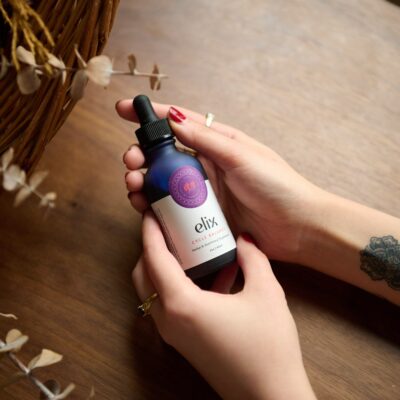
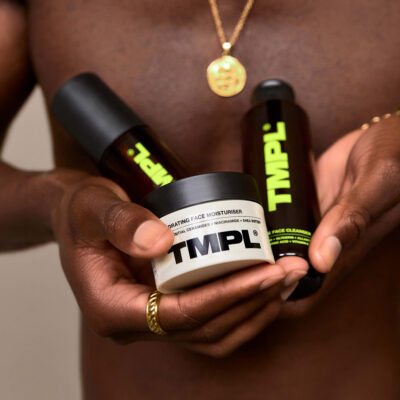
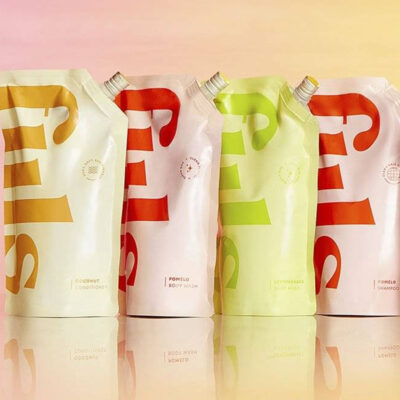
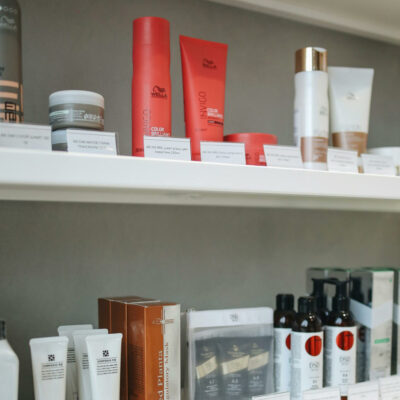
Leave a Reply
You must be logged in to post a comment.